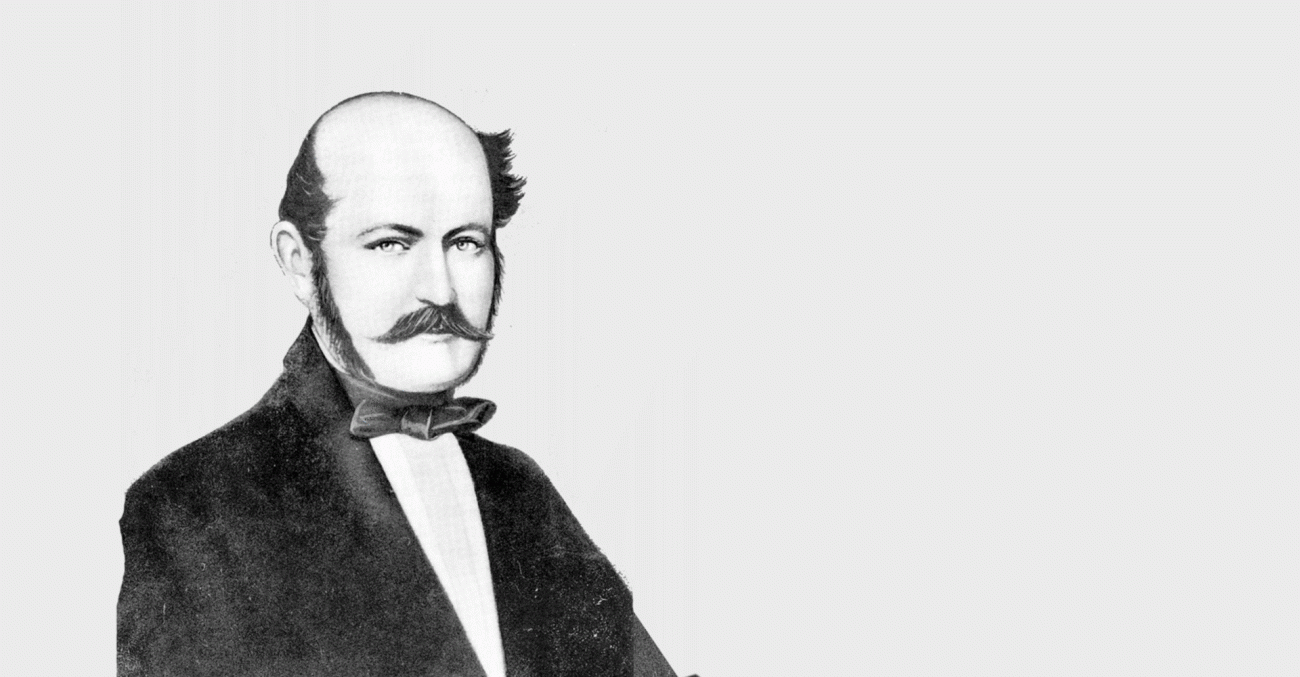
The ease of rejecting difficult new ideas – the Semmelweiss reflex explained
Being ahead of your time is the curse of innovators. Meet Prof. Semmelweis.
Being ahead of your time is the curse of innovators. Things take flight only if you make exactly the right invention at exactly the right time.
The cycle of adoption and adaptation to new ideas seems quite fast in the world of technology. But in other domains of life, we are generally quite reluctant to change the way we think and behave: old habits die hard. This tendency is elegantly described by the concept of the Semmelweis reflex, the instinctive rejection of new and unwelcome ideas. The story behind this concept is a tragic example of the biases in human thinking.
Meet Prof. Semmelweis
Professor Ignaz Semmelweis (1818–1865) is the physician celebrated for his discovery of the relationship between poor hygiene and maternal mortality. His discovery of the necessity of hand disinfection before surgical procedures has saved the lives of countless mothers with minimal cost and huge returns.
Nearly two hundred years after his birth, he was immortalized in an Austrian €50 coin. A Hungarian university was renamed in his honor in 2000. This guy must have been proud of his achievements back in the 19th century!
Wrong.
Dr. Ignaz Semmelweis died in 1865 after being confined to and beaten in Landes-Irren-Anstalt asylum. His remarkable discovery was mostly ignored by the medical community. The institute where he made his discovery, Vienna General Hospital, thanked him by sacking him.
Most medical lecture halls continue to resound with lectures on epidemic childbed fever and with discourses against my theories. […] In published medical works my teachings are either ignored or attacked. The medical faculty at Würzburg awarded a prize to a monograph written in 1859 in which my teachings were rejected”
– Semmelweis in 1861
The Semmelweis reflex is still with us
The sad story of Semmelweis has later been shaped into a metaphor. The Semmelweis reflex means that people instinctively avoid, reject and belittle any new evidence or knowledge that goes against their established beliefs, practices or values.
It requires tremendous intellectual honesty to avoid the Semmelweis reflex. Confirmation bias is another well-recorded psychological phenomenon relevant in this context. It is the diametrical opposite to the Semmelweis reflex, meaning that we are too quick to accept new ideas and facts when they are compatible with our thinking. If they are contradictory, as in the original case of Semmelweis, we reject them too easily.
Another irrational shortcoming of human thought is ownership bias, which refers to the unconscious overvaluation of one’s own possessions and ideas. In my research, I have demonstrated that this also holds true for the design ideas of professional designers.
From the scientific perspective, the Semmelweis reflex is founded on anecdotal evidence. Although not grounded in theory, it does seem like a powerful explanation in the age of denialism. Just think of climate change and the airborne transmission of COVID-19.
The mental Heimlich manoeuvre against the Semmelweis reflex
This short list of innate psychological biases makes it sound like we’re in trouble whenever we try to promote evidence-based or informed thinking, policies or even design. This is unfortunately true.
People everywhere in the world are currently getting their hopes up that the established idea of vaccination will save us from the pandemic. In a few places, the use of masks is also an established idea, and they are used unquestioningly to relieve the situation. However, some people are so crippled by Semmelweis that they publicly and aggressively oppose the use of masks outside medical care.
How can we generally cope with such strong biases?
One suggestion has been presented by Ron Kohavi. He comes from Microsoft and is a long-term advocate of decision-making and large-scale experimentation informed by data. He has also kindly shared many lessons learned from Microsoft’s culture of experimentation.
He has presented a view of cultural change that starts from hubris and moves through empirical exploration and acceptance of new findings towards fundamental understanding. Hubris is the stage in which prevailing attitudes and established beliefs keep up and lead to the rejection of new ideas. Semmelweis reflex.

The path from hubris to deep understanding.
Four steps to the adoption of new ideas
New facts can defend themselves against de facto truths and established dogmas through systematic, reliable and valid empirical exploration. But that involves a constant battle against the Semmelweis reflex.
Later, when the new evidence is approved and incremental research conducted to advance theoretical thinking (the hypothetico-deductive approach), fundamental understanding can emerge.
This process accurately describes the Semmelweis case. Fundamental understanding emerged some twenty years after Ignaz’s empirical findings, when Louis Pasteur identified the bacteria responsible for childbed fever, adding credibility to Ignaz’s findings.
Applications to ambitious organizations
It shouldn’t be hard to see the relevance of the Semmelweis reflex for the development of data-driven driven organizations. In short, being data-driven and making data-informed decisions requires abandoning seniority, intuition and tradition as grounds for decision-making.
It means that anyone who wants to champion decision making based on data will have to acknowledge that there will be strong resistance, a reflex, against data that is contrary to established opinions. Many HiPPOs (highest-paid person’s opinions) will fall before the reflex is overcome.
Organizational change is also challenging for reasons other than the Semmelweis reflex. Resistance to change is a normal reaction, resulting in falling back to established habits and ways of working. A data-driven approach requires both
- acceptance of the facts instead of intuitively appealing ideas
- changing the way decisions are made, and possibly the whole management process.
What you can do as an advocate of data is to articulate and justify your case with the most honest and reliable data possible. Find the numbers to stand for the null hypothesis (the present) state and corresponding evidence that can reveal a better future. Accept Kohavi’s cultural evolution model and be aware that convincing data is needed to make the change happen. You should try to understand the reasons behind the numbers, but understand that it is really the third, not the second step.
The Semmelweis reflex was brought to my attention by a delightful presentation by Ronny Kovahi. If you want to hear more about this guy, you can find several talks here!
Images: public domain, ibid. Gif: Ville Brofeldt



